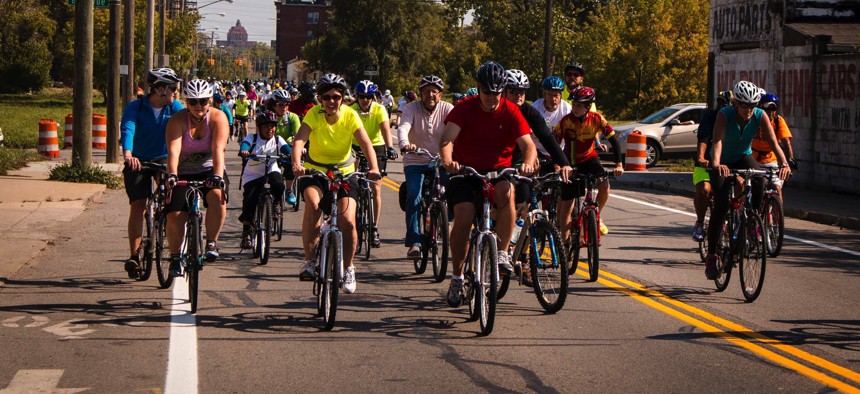Connecting state and local government leaders
In the Motor City, an incremental but organic buildout of bikeways is as good a transportation solution as any. It's cost effective, too.
DETROIT — This autumn’s Tour de Troit , an annual fundraiser for the Motor City’s emerging array of bicycle infrastructure, saw more than 7,000 riders take to the streets under a dark and windy sky.
This was another impressive showcase event demonstrating how bicycle culture has taken root and flourished in what’s long been an auto-centric city. As the city of Detroit takes steps with federal, state and regional partners for new transportation investments—one that hopefully sees cars share the roads more equally with bikes, pedestrians and transit—challenges abound.
Struggling to emerge after decades of population loss and a historic municipal bankruptcy, Detroit has become a national symbol for a ground-up, do-it-yourself revival. Arts organizations from Brooklyn, tech refugees from San Francisco and whiskey distillers have been setting up shop in the city, attracted by the prospect of building from scratch and a lower cost of living.
Unsurprisingly, Detroit’s municipal government, with its limited resources coming after years of cuts and Great Recession restructuring, must rely heavily on outside groups and partnerships to help formulate plans, raise money and apply for federal grants.
As Detroit looks ahead at its future surface transportation landscape, which includes the M1 Rail streetcar project that’s now under construction, cycling investment and other new infrastructure is looking more and more like a smart choice.
Here Come the Bikes
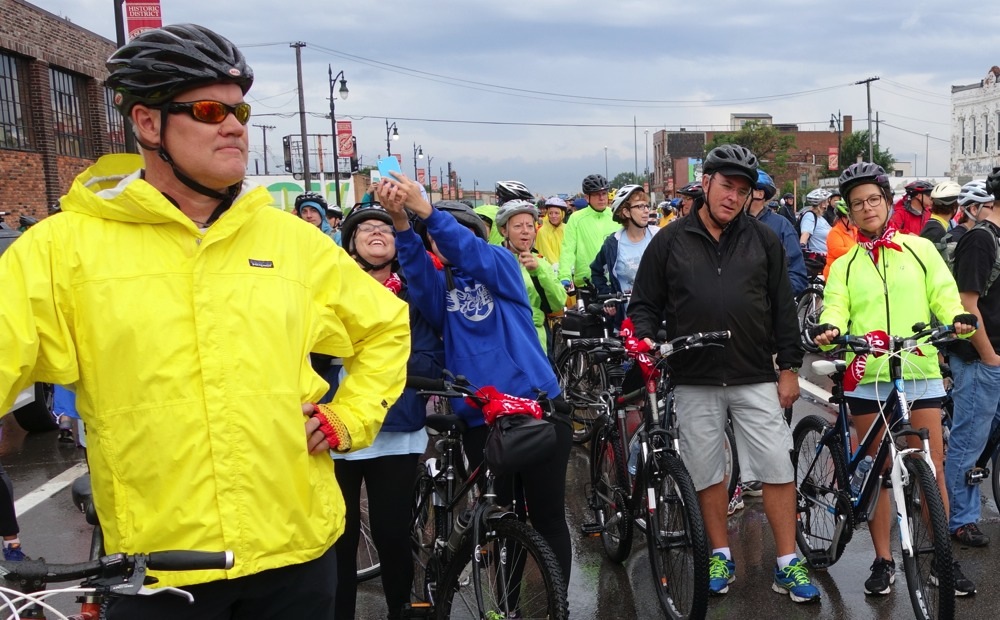
Todd Scott is the director of the Detroit Greenways Coalition , a group overseeing the buildout of a 26-mile Inner Circle Greenway bike route that will bring access from some of the city’s interior neighborhoods to its riverfront. The organization works closely with the city on a project-by-project basis, and it charts the rise of biking.
“Bike ridership is growing very fast,” Scott said. “Just in the past few years, we’ve gone from zero to 30 bike clubs, and Slow Roll Monday Nights has gone from 10 people to over 3,000 people. Not to mention that Tour de Troit started at zero too, over a decade ago.”
An example of a Detroit Slow Roll:
The U.S. Department of Transportation has taken a new interest in cycling as a legitimate transport solution nationally. Last year’s decision to elevate cycling safety in all new infrastructure projects was the major signal.
Data collection, a key feedback mechanism to assess trends, is just getting started.
“Although it’s been hard so far to get real-time data like you have in other cities, we just installed our first automated counters,” Scott said. “And we expect to have [live count displays] soon.”
Better data collection will further make the case for more investment in cycling infrastructure.
Maurice Cox , an architect, bike rider and former mayor of Charlottesville, Virginia, was appointed director of the city’s Planning Department in February. And the department, according to Karen Gage , a principal planner with the city, is very much in expansion mode.
“Under the grand vision of the City of Detroit's Non-Motorized Master Plan, and with the transformation of the Planning Department I have described, we hope to take more of a leadership role in creating a grand vision for cycling in the City,” Gage said in an email to Route Fifty .
In partnership with local groups, the city has already been quite successful in helping win state and federal dollars. The gross, trailing figure estimated by Scott, largely raised for the benefit of cycling and related improvements for pedestrians and parks, has been about $140 million so far. TIGER grants from U.S. Department of Transportation have been awarded frequently to the city, with another key TIGER grant application in the works right now.
“Our group was formed in 2007 to take on a larger vision. We decided we could undertake larger projects,” Scott said. “When we work with the city we bring more than just ideas. Indeed, we do what city staffs might do in other cities. So the line has shifted a bit—it’s more of a public-private partnership.”
Gage echoes this framework.
“I would say that many of the ideas, cycling framework projects and even so far as engineered project plans bubble up to the government from the community level,” he said. ”So it is definitely a community-driven approach the bike infrastructure planning here in the City of Detroit.”
Here Comes the Streetcar
If there’s a compelling reason for bicycles to play a key role in Detroit’s comprehensive transit plan, it’s the vast land area over which the city is laid out. Detroit’s municipal footprint is so vast, at 138 square miles, that the cities proper of San Francisco and Boston could fit within its borders with enough room left over to fit the island of Manhattan.
Because of the city’s low-density sprawl, major transit projects that have been envisioned are limited to principal corridors.
Construction is underway on the M1 Rail streetcar that will travel the southern portion of Woodward Avenue in Detroit, connecting downtown with the New Center area.
A state highway route, M-1, follows Woodward Avenue and forms the city’s central spine, connecting many of the city’s iconic buildings and landmarks: the Detroit Institute of the Arts , the Detroit Public Library’s main branch , Fox Theatre , Wayne State University , Campus Martius and Grand Circus parks and Hart Plaza on the riverfront. A new arena for the Detroit Red Wings will join Comerica Park and Ford Field as major sports venues that will be accessible along M1 Rail route in the Woodward corridor. Major medical centers are adjacent or near this section of Woodward, too.
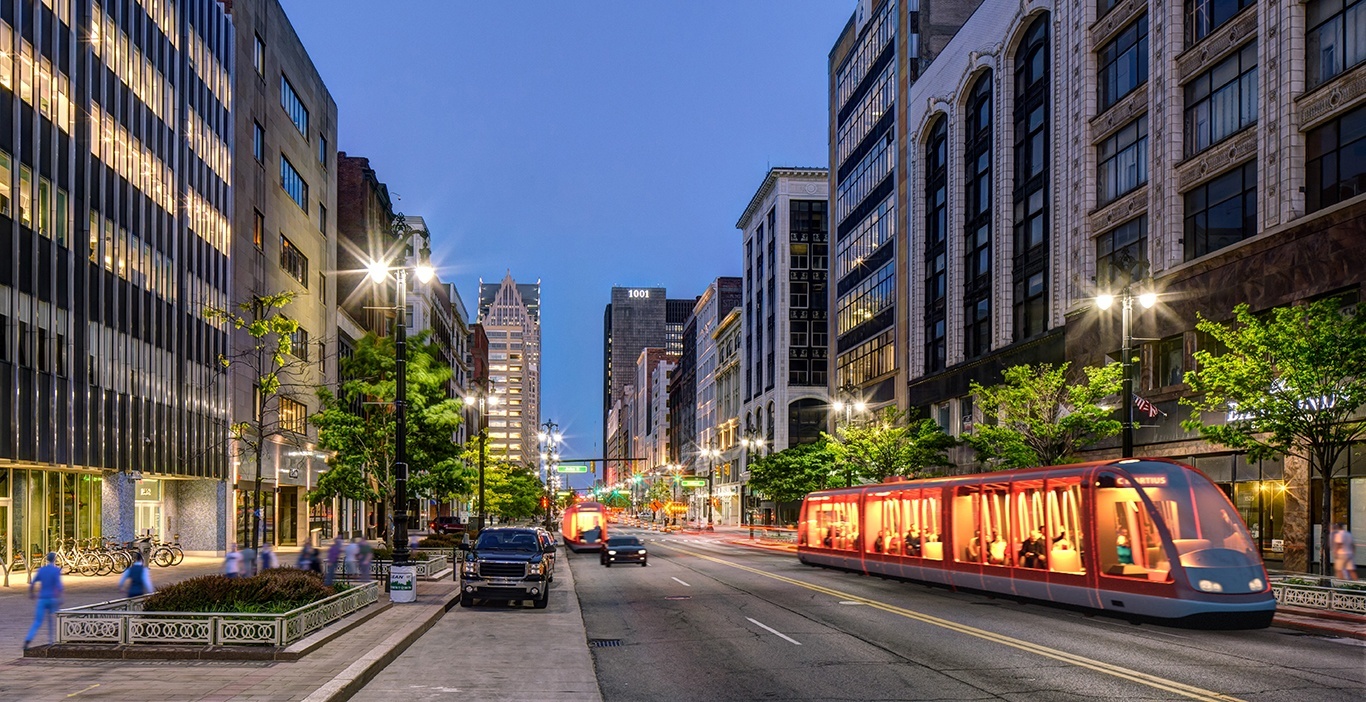
The M1 Rail line will also connect with Detroit’s Amtrak station, which will host higher-speed intercity rail service service between Chicago and Michigan’s largest city via Kalamazoo and Ann Arbor. (Amtrak already controls 90 miles of tracks that have been upgraded allowing its trains to travel 110 miles per hour . Ongoing signal and track improvements along the route will expand high-speed service between Chicago and Detroit in the coming years , with the aim of cutting travel times on that trip from five and a half hours to eventually four hours. Commuter rail service between Detroit and Ann Arbor has been explored as well.)
So the economic development rationale for a streetcar in such a central corridor is solid. But the M1 project only covers 3.3 miles of Woodward, which stretches to Eight Mile Road, the city’s boundary with suburban Oakland County. Outside Detroit, Woodward continues 16 additional miles to the city of Pontiac as a multi-lane boulevard through communities like Ferndale, Royal Oak, Birmingham and Bloomfield Hills.
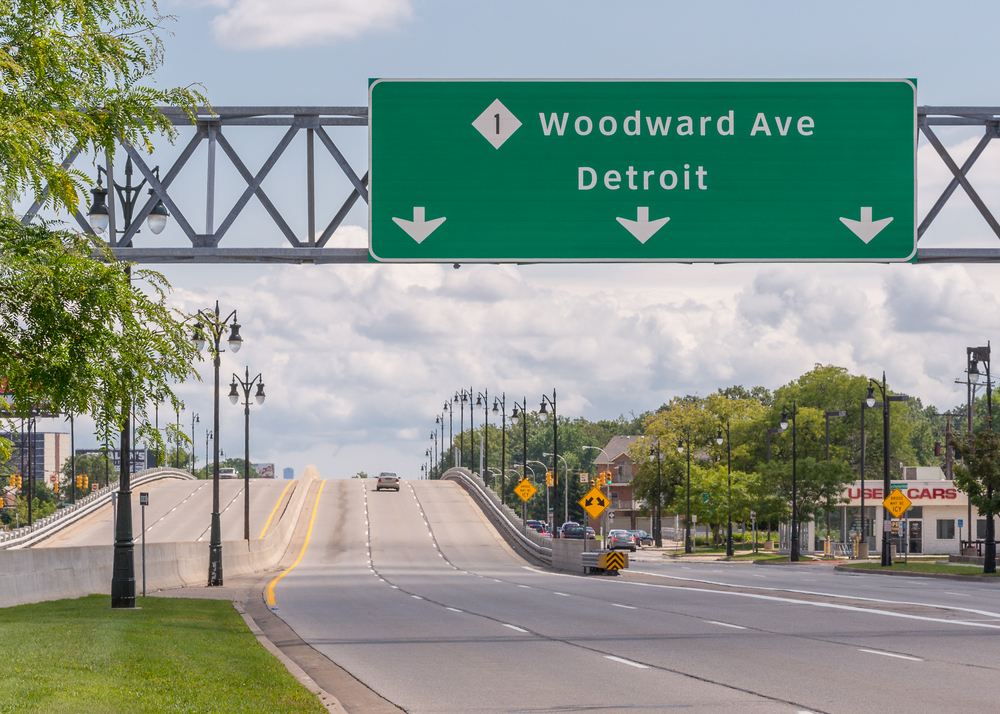
There is also a regional proposal to bring bus rapid transit to the Woodward corridor , along with two other primary Metro Detroit roadways: M-3 / Gratiot Avenue through Detroit’s East Side and into Macomb County and U.S. 12 / Michigan Avenue westward out of downtown Detroit and on through Dearborn and onward to Detroit Metropolitan-Wayne County Airport and Ann Arbor.

Previous efforts to coordinate regional public transit services in Southeast Michigan have failed for decades , but in 2012, state, county and city leaders formed the Regional Transit Authority of Southeast Michigan , which is developing a regional transit plan.
Before any regional transit system emerges, the M1 Rail project is being built in Detroit’s core, thanks to a patchwork of 24 different public and private funding sources , ranging from federal and state government to local institutions and foundations. It’s the “first major transit project being led and funded by both private businesses, philanthropic organizations, in partnership” with state and local governments, plus the U.S. Department of Transportation. Construction is underway along Woodward.
Broadly speaking, however, streetcars are at times controversial in transit circles. They can be seen as overly expensive and a toy for developers and some cities have had major trouble jumpstarting transit operations . And streetcars that don’t have their own right of way can get bogged down by traffic on surface streets.
The M1 Rail line is projected to cost $180 million. But perhaps a brightly colored, friendly looking streetcar is just what’s needed in Detroit’s denser core and be the start of larger regional transit network for Southeast Michigan, which has been dependent on its vast freeway network since the mid 20th century.
“Whether it’s a loop that brings people around a city center or running along a single street, a streetcar can really have a strong, placemaking impact on a city.” said Amy Nagy, the business development coordinator for the Portland Development Commission in Oregon. “There’s a real opportunity here for Detroit to bring in more pedestrians, as you layer in bikes, and eventually that all flows to business and shop owners.”
Potentially High Returns on Bike Investments
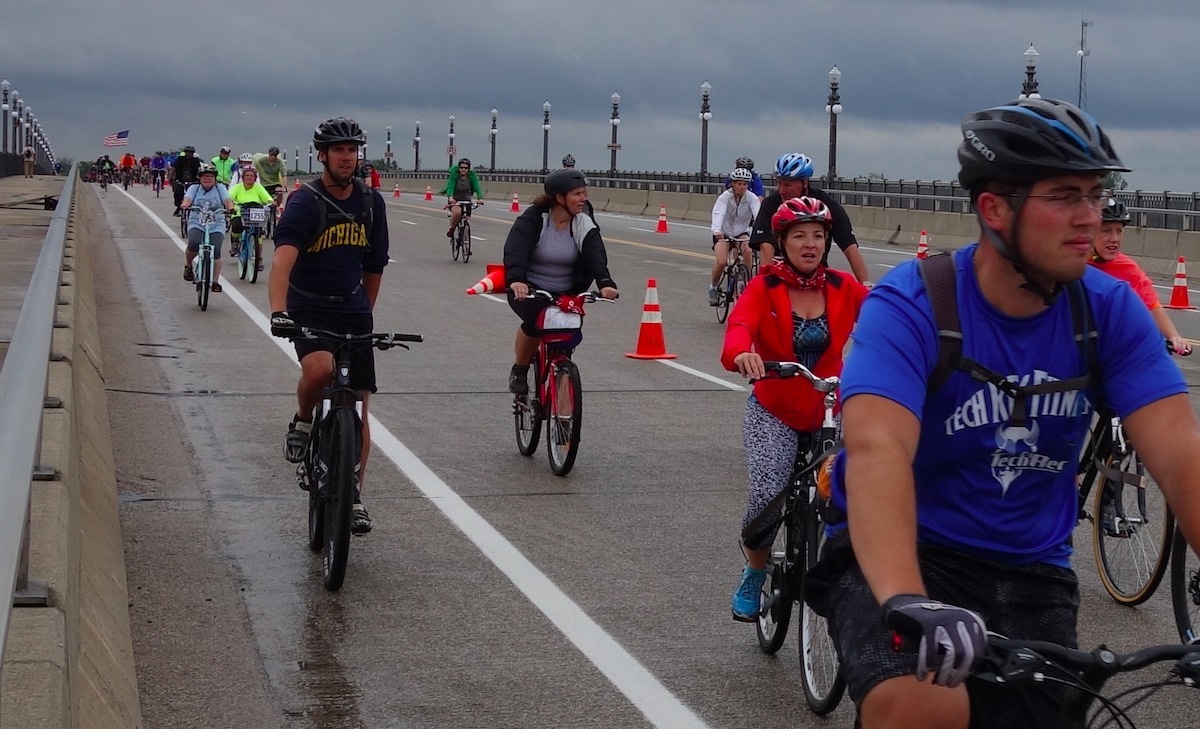
In a city with a big surface transportation footprint, new bicycle infrastructure is taking shape.
With downtown commercial development starting to accelerate, the next phase of bike investment clearly anticipates the return of bike commuters. East Jefferson Avenue, which connects downtown Detroit with the bridge leading to the 985-acre Belle Isle Park and the suburban Grosse Pointe communities is set to be home to the city’s first protected bike lanes .
Bicycle counter data collection has begun both there and on Cass Avenue, Scott said, another city arterial targeted for bike lane development. Meanwhile, the Dequindre Cut , an inventive and beautiful repurposing of an former rail line, is already delivering riders to a newly landscaped park—a project of the Detroit River Conservancy .
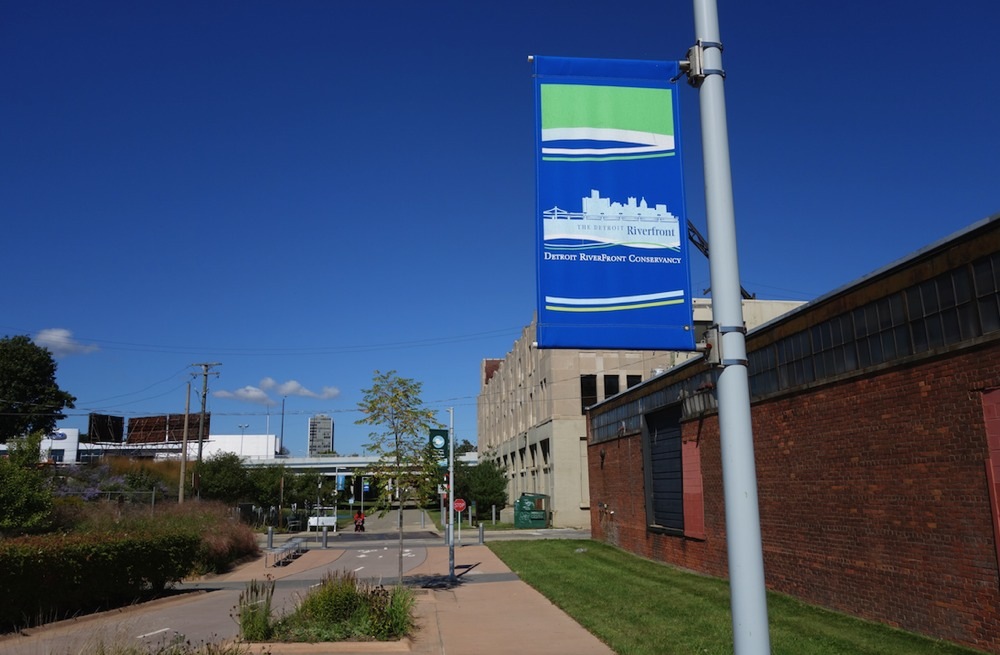
It may be that, in Detroit’s current condition, an incremental but organic buildout of the city’s bikeways is as good a solution as any and one that’s cost effective, given the city boasts plenty of wide thoroughfares.
“We have a lot of roadway available to both motorized and nonmotorized transport,” Gage said. “We have the infrastructure available to deliver on street bike lanes for a minimal cost and impact to traffic.”
If streetcars humanize urban space, then Detroit, with its far-flung land area, is also being humanized more quickly by the rise of bike culture. Detroit’s waterfront is captivating, and kayakers can regularly be seen now paddling the river.
The next $10 million TIGER grant, on which the city is awaiting a decision, would essentially fund the entire first phase of the Inner Circle Greenway, starting on Detroit’s West Side.
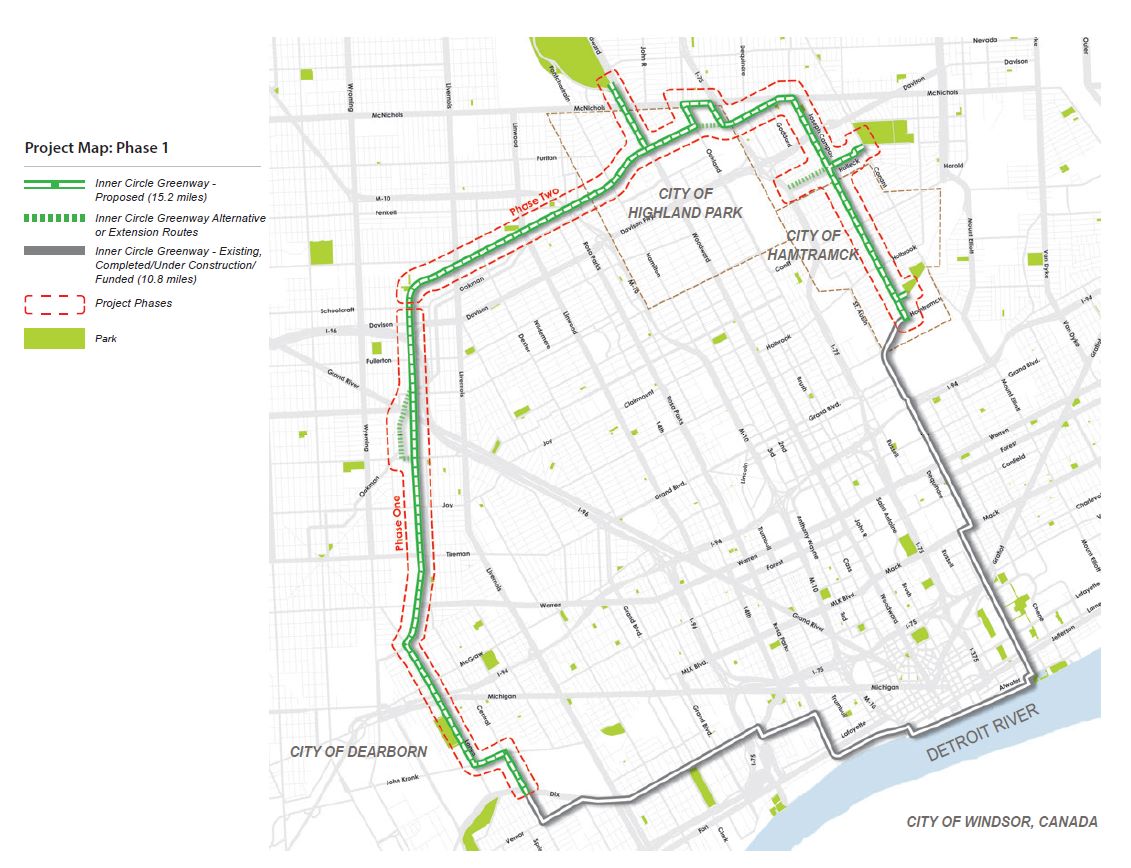
Assuming that funding comes through, Detroit will be able to add key bicycle commuting routes that will connect with its other new transit investments.
Nationally, transit planners today speak today of the changes unfolding in the traditional transport hierarchy. Pedestrians and cyclists are increasingly elevated, as the automobile is downshifted. As a further sign of this transition, a commemorative plaque at the foot of the Dequindre Cut notes that a key piece of its funding came, in part, from “oil, gas, and natural resource revenues.” In the city of Detroit, or rather, The Motor City —which built its wealth from a world running on oil—a decisive break from its past is now underway.
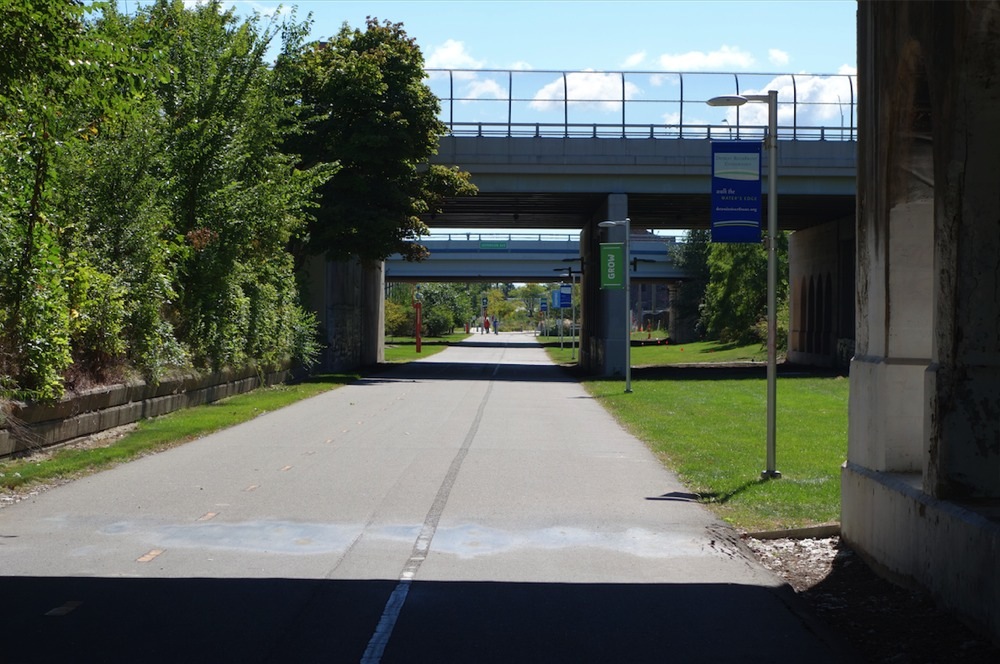
Gregor Macdonald is a journalist based in Portland, Oregon. Lead image by gregezzo / Flickr via CC BY 2.0

NEXT STORY: Many States Still Grapple With Regulating Medical Marijuana
